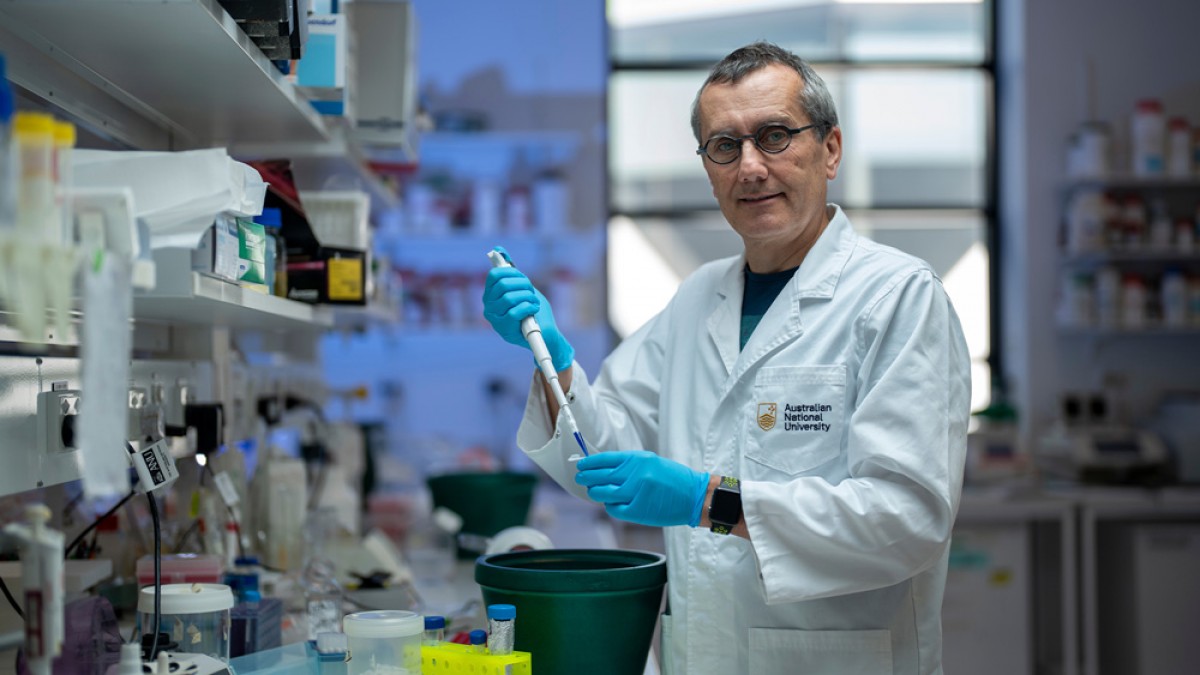A close relative of DNA, ribonucleic acid (RNA) plays a critical role in making the proteins that are essential to life.
Despite its importance, RNA had been living in the shadows of its better-known relation for decades, before it burst into the public eye during the COVID-19 pandemic response.
DNA carries crucial instructions for keeping all known organisms alive.
But while DNA holds the codes, cells make a myriad of RNAs that “act like short lived photocopies of our genetic information,” according to Professor Thomas Preiss from The Australian National University (ANU).
“Making RNA is really how our genome comes alive. Messenger RNA (mRNA), a major type of RNA, is the template for making proteins,” Preiss says.
“And because the mRNA breaks down quickly it gives cells the opportunity to change the type and number of proteins made based on demand. This is key to allowing living things to growth, change, and react to their environment.”
Cells are already in the business of reading mRNA, which is why using mRNA as a vaccine became such a crucial part of our response to the COVID-19 pandemic.
“The COVID-19 vaccine mRNA carries instructions to make the viral spike protein into our cells, triggering an immune response. After a short while, the vaccine mRNA and the spike protein disappear without a trace but our body remembers how to produce COVID-19 antibodies to help protect us from getting sick,” Preiss says.
“Therapeutic mRNA will likely also be successful in dealing with other infectious diseases like the flu.”
How ANU experts helped crack the code
By the early 1970s, scientists understood there were little machine-like parts of our cells called ribosomes that were busy making proteins based on mRNA instructions, but how did they know where the instructions started and ended?
That’s where Lynn Dalgarno and his PhD student at ANU, John Shine, come in.
In 1973, they laboriously obtained short bits of RNA sequence information and came up with a theory for how this process worked for bacteria.
“Bacteria typically make mRNA as a long string, with multiple sections of coding information in the one strand,” Preiss says.
“The ribosome must track down the beginning of each of those segments to make different proteins. Shine and Dalgarno discovered a sequence they believed was involved in pointing the ribosome to the right place. This became known as the Shine-Dalgarno sequence.”
“Simply put, genes are read in groups of three letters, but you need to let the ribosome know where to start. For example, if you read ‘the cat sat on the mat,’ it makes sense, but if you shift the starting point by one letter, it becomes nonsense.
“The Shine-Dalgarno sequence tells the bacteria where to start protein synthesis so that the genetic code in mRNA is read correctly.”
Preiss says while this was an important insight into nature on its own, it also eventually enabled scientists to use bacteria as biofactories to make a host of different proteins that are now in use as drugs or underpinning important processes in biotechnology.
50 years on
RNA research has come a long way since that discovery on the ANU campus 50 years ago. Preiss says there’s no better evidence of this than the multiple Nobel Prizes that have been awarded in the field.
“We now know, for example, RNA is not just a template for protein synthesis, but can act as an enzyme and catalyse chemical reactions,” Preiss says.
The discovery of RNA interference, or RNAi, was another big step forward. While it has a natural role as a mechanism to silence cell invaders, it has also become a very useful tool to study genes and treat disease.
“As part of the Shine-Dalgarno Centre here at ANU, the lab of Riccardo Natoli is now harnessing RNAi for the treatment of ocular diseases,” Preiss says.
“Higher organisms use a ‘cap’ on their mRNA instead of the Shine-Dalgarno sequence. Scientists at the Centre, including Dr Nikolay Shirokikh, have also made important contributions to our understanding of how the mRNA cap guides the ribosome to start its work in the right way.
“Historically, ANU and Australian researchers more broadly have been punching above our weight in this field.”
So what’s next?
The newly established ANU Shine-Dalgarno Centre will be officially launched on Monday 5 June.
Preiss is hopeful that with support from government and investors the Centre’s research will lead to new medicines and diagnostics tools for as-yet incurable diseases, as well as innovations in other fields such as agriculture and biotech solutions to make products more environmentally friendly.
“Every time you discover something new in nature, you will ultimately find ways to harness that discovery,” Preiss says.
“As scientists, we dig around because we’re curious. We find something that helps us understand the world around us, and then we also find a use for it. And this can profoundly change the way human society develops. RNA research is the perfect example of this.”
The Shine-Dalgarno Centre for RNA Innovation will be formally launched at the 50 Years Shine-Dalgarno Symposium, which will celebrate the history and future of Australian RNA science, starting with a tribute to the work here at The Australian National University (ANU) that discovered the Shine-Dalgarno sequence in mRNA.
This article was first published on ANU Reporter.










